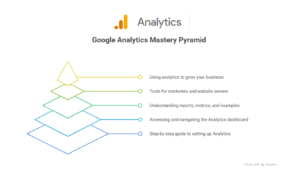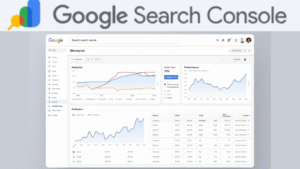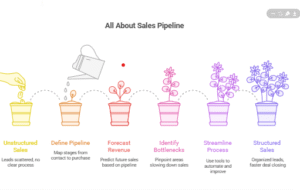Every website on the internet needs a way to communicate with search engine crawlers — and that’s where the robots.txt file comes in. This small yet powerful text file guides search engines on which parts of your site should be crawled or ignored. For businesses and digital marketers, understanding how to properly configure robots.txt can mean the difference between efficient indexing and wasted crawl budget.
Whether you’re a small business owner, marketer, or SEO professional, mastering robots.txt optimization helps improve visibility, maintain security, and enhance crawl efficiency — all of which contribute to stronger SEO performance.
In this complete guide, we’ll cover everything you need to know about robots.txt, from structure and syntax to advanced tips and examples.
What Is a robots.txt File?
A robots.txt file is a simple text file placed in the root directory of your website (example: https://www.example.com/robots.txt). Its main purpose is to instruct search engine crawlers (like Googlebot, Bingbot, etc.) about which URLs they are allowed or disallowed to crawl.
Think of it as a “roadmap for crawlers” that helps search engines understand your site better and avoid crawling unnecessary or sensitive pages.
Example of a Basic robots.txt File
User-agent: *
Disallow: /wp-admin/
Allow: /wp-admin/admin-ajax.php
In this example:
User-agent: *means the rule applies to all crawlers.Disallow: /wp-admin/tells crawlers not to crawl admin pages.Allow: /wp-admin/admin-ajax.phpgives permission to access a specific file.
Why robots.txt File Matters for SEO
The robots.txt file plays a crucial role in SEO performance and technical site health. Here’s how:
1. Crawl Budget Optimization
Every website has a crawl budget — the number of pages search engines crawl in a given time. By blocking unimportant pages, you allow bots to focus on essential ones, improving crawl efficiency.
2. Prevent Indexing of Sensitive Pages
Keep pages like admin panels, test directories, or internal documents out of search results by disallowing them.
3. Avoid Duplicate Content
Block duplicate or parameterized URLs that may dilute your site’s ranking signals.
4. Improve Site Speed
Fewer unnecessary crawls mean better server performance and improved loading efficiency.
Structure and Syntax of robots.txt
A typical robots.txt file uses a set of directives. Let’s understand them one by one:
| Directive | Function | Example |
|---|---|---|
User-agent | Specifies the crawler | User-agent: Googlebot |
Disallow | Blocks pages or folders | Disallow: /private/ |
Allow | Permits access (used after disallow) | Allow: /public/ |
Sitemap | Tells crawlers where the XML sitemap is | Sitemap: https://example.com/sitemap.xml |
Crawl-delay | Sets a time delay between crawls | Crawl-delay: 10 |
robots.txt Directives Explained with Examples
1. Blocking Specific Folders
If you don’t want bots to crawl your “temp” folder:
User-agent: *
Disallow: /temp/
2. Blocking Specific Pages
To block a single page:
User-agent: *
Disallow: /checkout.html
3. Allowing Specific Files
Even within a blocked folder, you can allow specific files:
User-agent: *
Disallow: /private/
Allow: /private/thankyou.html
4. Setting Crawl Delay
Limit how often crawlers access your site (useful for smaller servers):
User-agent: Bingbot
Crawl-delay: 5
5. Declaring Sitemap
Always include your sitemap to help bots understand your site structure:
Sitemap: https://www.kkfreelancer.in/sitemap.xml
Best Practices for robots.txt File
Follow these expert-approved practices to ensure your robots.txt file helps your SEO instead of hurting it:
- ✅ Always test your file in Google Search Console’s Robots.txt Tester before publishing.
- ✅ Place it in the root directory (e.g.,
https://www.yoursite.com/robots.txt). - ✅ Use lowercase for file naming to avoid confusion (
robots.txtnotRobots.txt). - ✅ Avoid blocking essential pages like your home, product, or category URLs.
- ✅ Include your XML sitemap for better indexing.
- ✅ Regularly review and update based on site changes or new pages.
Common robots.txt Mistakes to Avoid
| Mistake | Impact |
|---|---|
| Blocking entire site unintentionally | Prevents all indexing |
| Using “noindex” in robots.txt | Ignored by Google (use meta robots tag instead) |
| Missing sitemap reference | Hurts crawlability |
| Not testing syntax | Leads to unexpected behavior |
robots.txt vs Meta Robots Tag
| Feature | robots.txt | Meta Robots Tag |
|---|---|---|
| Location | Root directory | HTML page header |
| Controls | Crawling | Indexing |
| Syntax | Text-based | HTML-based |
| Use case | Large-scale exclusions | Page-level control |
Both are important for SEO but serve different purposes. Use robots.txt to manage crawl access and meta robots for controlling indexing.
Advanced Tips: robots.txt for Large Websites
If you’re managing a large eCommerce or service-based website like kkfreelancer.in, these strategies can enhance crawl efficiency:
- Segment rules for specific bots (e.g., Googlebot, Bingbot).
- Block faceted navigation URLs (like
?color=redor?sort=price). - Allow important JS and CSS files to ensure page rendering accuracy.
- Use
Disallowpatterns wisely to prevent blocking critical assets.
How to Create and Submit robots.txt File
- Create a file named
robots.txtin a text editor. - Add your rules as per your site’s structure.
- Upload it to your root directory using FTP or your CMS.
- Test it in Google Search Console.
- Submit your sitemap inside the file.
robots.txt and SEO Tools You Can Use
Here are a few free and paid tools to test and manage your robots.txt configuration:
- Google Search Console – Robots.txt Tester
- Ahrefs Site Audit Tool
- Screaming Frog SEO Spider
- Yoast SEO Plugin (for WordPress)
You can refer to Google’s official documentation on robots.txt for advanced use cases.
How robots.txt Impacts Other SEO Checklists
Your robots.txt file complements other SEO strategies, including the bold Ai SEO Check List, Technical SEO Checklist, Off page SEO Checklist, and On page SEO Checklist. Together, these form a complete SEO ecosystem that ensures your website ranks higher and performs efficiently.
Conclusion: Make Your robots.txt Work for You
The robots.txt file is one of the simplest yet most powerful tools in SEO. When configured correctly, it ensures your website is efficiently crawled, indexed, and secured from unnecessary exposure. Misconfigured, however, it can block vital pages and harm your rankings.
For the best results, review your robots.txt regularly and align it with your technical SEO strategy.
If you want expert help in optimizing your website for search engines, contact kkfreelancer — a leading digital marketing agency offering tailored SEO, PPC, and AI optimization services. You can also explore our SEO Service page or check out our blog section for more SEO insights.
FAQs About robots.txt File
It guides search engine bots on which pages or sections of your site to crawl or avoid.
No, but it’s highly recommended for better crawl management and site control.
Not always. Use a “noindex” meta tag instead to stop indexing.
In your website’s root directory (e.g., https://www.example.com/robots.txt).
It can block search engines from accessing important pages, harming your SEO rankings.





